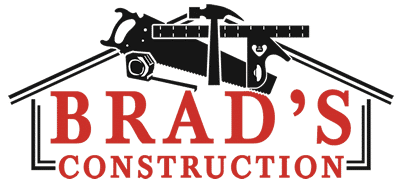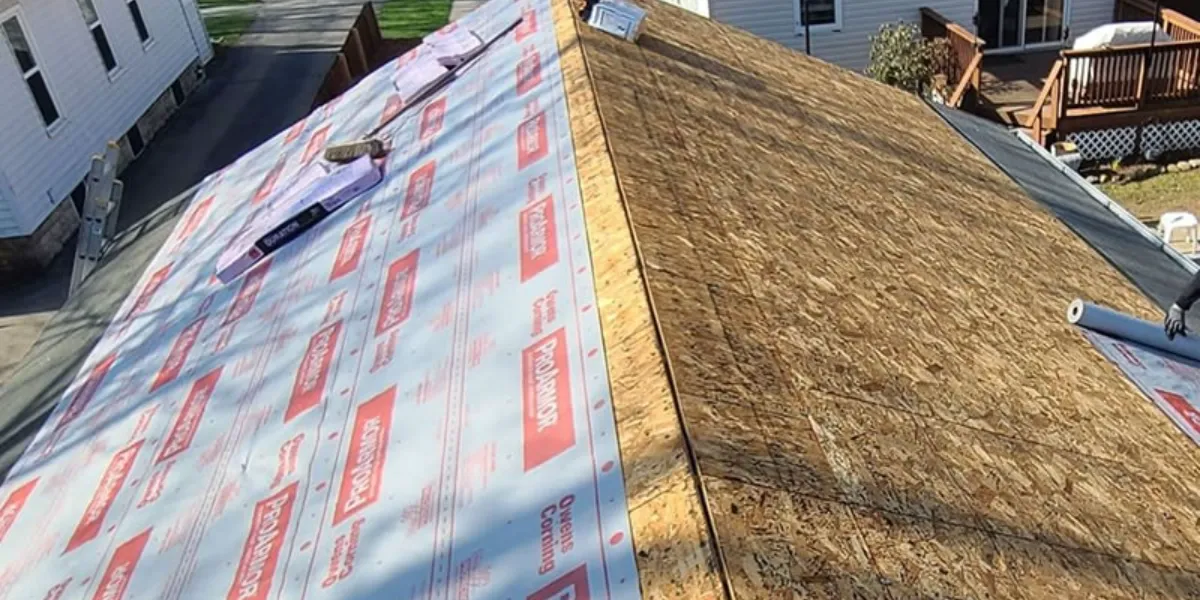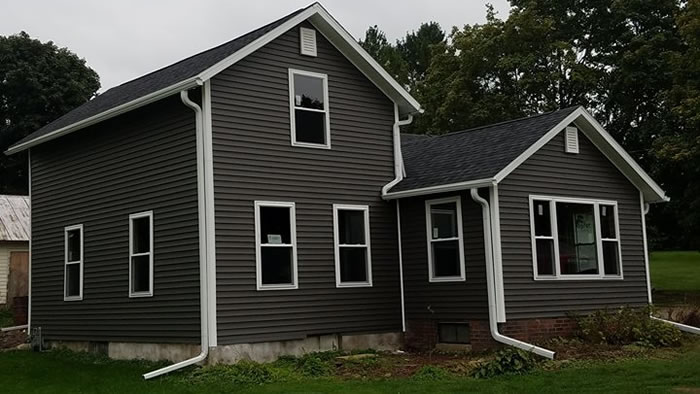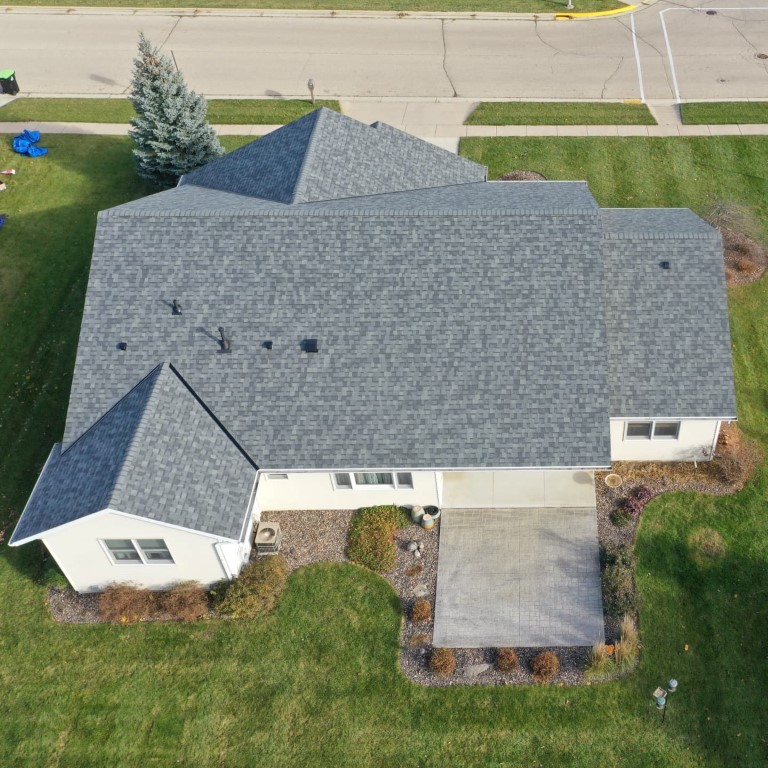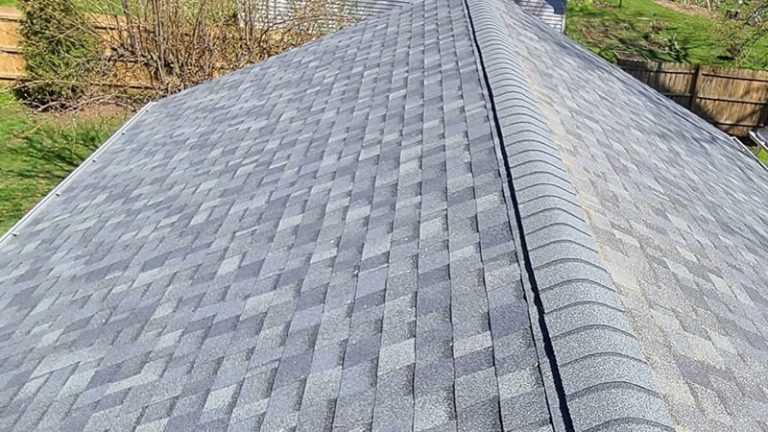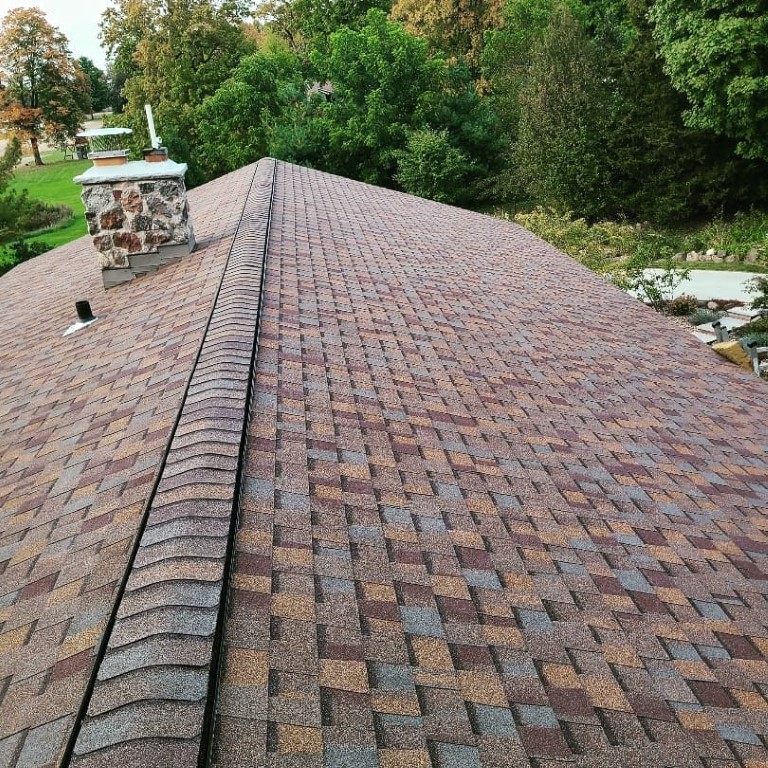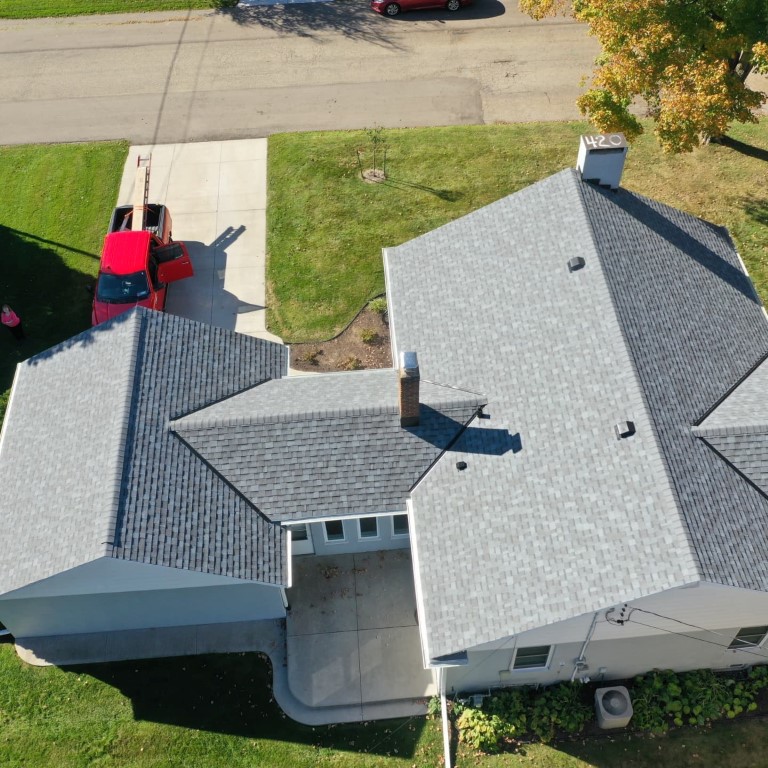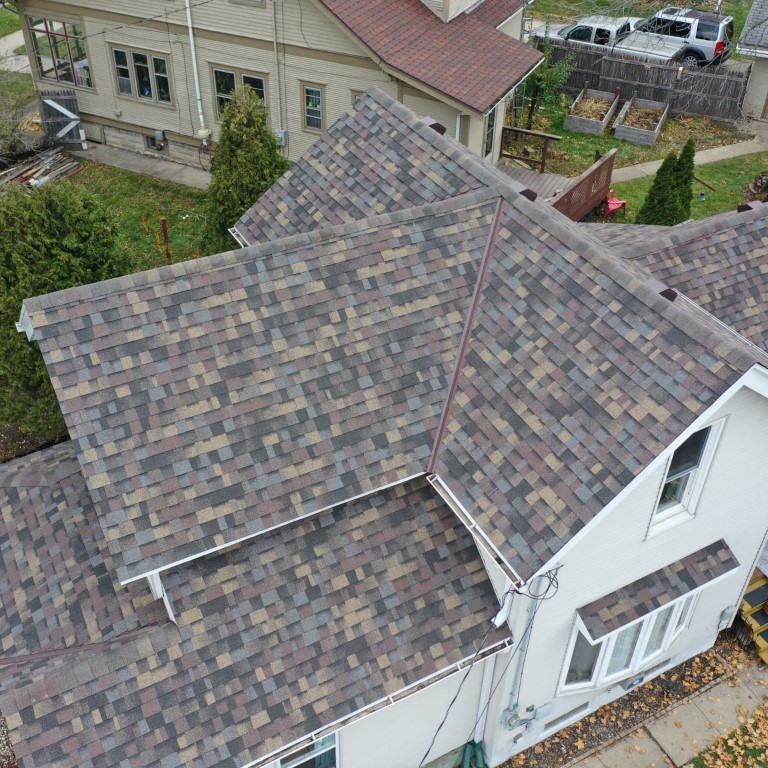Why Is My Roof Leaking Around the Chimney?
A roof leak around the chimney is one of the most common—and most frustrating—issues homeowners in Dodge County encounter. What starts as a small water stain on the ceiling or a damp smell in the attic can quickly turn into rotted framing, mold growth, or costly structural repairs.
If you’ve noticed water infiltration near your chimney, don’t ignore it. Chimney leaks are rarely caused by the chimney itself—instead, they’re often the result of roofing issues that require expert repair. Let’s explore the most likely causes and how Brad’s Construction can help.
Common Reasons Your Roof Leaks Around the Chimney
Understanding why your roof is leaking around the chimney is the first step to getting it properly repaired. Chimney leaks are rarely caused by a single issue—instead, they usually stem from a combination of poor flashing, weather-related wear, and roofing design flaws. Here are the most common causes:
1. Damaged or Improper Flashing
Chimney flashing is a critical part of your roofing system. It’s the thin metal material—typically aluminum or galvanized steel—that seals the transition between your roof and the sides of your chimney. Its main job is to prevent water from entering where two structures meet.
However, flashing is also one of the most common failure points on a roof. It can become compromised due to:
-
-
- Rust or corrosion after years of exposure to rain, snow, and UV rays
- Cracked or dried-out sealant, which allows moisture to seep in
- Improper installation, such as overlapping seams facing uphill or nails driven through exposed flashing
- Shifting or settling of the chimney, which can pull the flashing loose from the masonry or siding
-
Once the flashing is damaged or pulled away, water can easily slip through and saturate the roof decking, insulation, or drywall below. In many cases, the leak might not appear directly at the chimney—it may travel several feet before becoming visible inside your home.
2. Cracked Chimney Crown or Deteriorating Masonry
The chimney crown is the concrete slab that covers the top of your chimney and sheds water away from the flue and brickwork. Over time, harsh weather and freeze-thaw cycles common in Wisconsin can cause the crown to crack or crumble.
Water then seeps into these cracks or directly into the brick joints, saturating the masonry. As this water migrates downward, it can:
-
-
- Leak into the interior flue and cause rust on metal liners
- Travel through the chimney structure and into your attic
- Freeze and expand, widening cracks and causing even more damage
-
If you see broken bricks, missing mortar joints, or moss growing on the chimney, it may be time to have the structure inspected—especially if you’re already experiencing leaks.
3. Missing or Damaged Shingles Near the Chimney
Even the most well-installed flashing can't protect your roof if the shingles surrounding the chimney are damaged. Shingles provide the first layer of defense against rain and snow, and any disruption in that layer exposes your home to water intrusion.
Common issues include:
-
-
- Wind-lifted shingles that create gaps near the chimney
- Hail or storm damage that cracks or punctures the shingles
- Granule loss over time, weakening the shingle’s waterproof surface
- Improper nailing patterns that allow shingles to shift or come loose
-
If your roof is more than 15–20 years old—or if you’ve recently experienced a major storm—this is one of the first things a professional roofing contractor should inspect.
4. Poor Roof Slope, Design, or Missing Saddle Flashing
The way your roof is designed plays a major role in how well it sheds water. Chimneys located in valleys, low-pitch areas, or dead zones where water naturally collects are especially vulnerable to leaks.
One often-overlooked solution is a chimney cricket (also called a saddle)—a small ridge built on the high side of the chimney to divert water around it. If your chimney lacks this feature, water can pool behind the chimney and gradually seep under the flashing or shingles.
Signs of design-related chimney leaks may include:
-
-
- Recurring leaks during heavy or wind-driven rain
- Water pooling at the base of the chimney
- Persistent staining or algae growth on the roof behind the chimney
-
Proper slope and diversion details are especially important on larger chimneys or those installed on low-slope roofs.
5. Ice Dams and Freeze-Thaw Damage
In Wisconsin, ice dams are a seasonal hazard that can cause serious roofing issues. Warm air escaping from your home melts snow on the roof, which then refreezes at the eaves and around the chimney. This creates a dam that traps water and forces it back under the shingles.
Around chimneys—especially those that stay warm due to flue gases—ice dams can form quickly. This water intrusion can:
-
-
- Soak underlayment and roof decking
- Leak behind flashing
- Cause long-term wood rot and insulation damage
-
Upgrading to an ice and water shield underlayment around chimneys, valleys, and other vulnerable areas is one of the best ways to prevent damage from ice dams.
Signs You Have a Chimney Leak
Chimney leaks don’t always present themselves as obvious puddles or dramatic water damage. In fact, many homeowners miss the early signs until the issue becomes more serious. Recognizing the subtle symptoms can help you address the problem before it leads to structural deterioration or expensive interior repairs.
Here are several warning signs that may indicate a leak around your chimney:
-
- Water stains or yellowish discoloration on the ceiling or walls near the chimney—especially after a heavy rain
- Soft, swollen, or bubbling drywall on the chimney-facing wall or ceiling
- Musty or damp smells in upper rooms or the attic, especially near the fireplace
- Visible mold or mildew, which thrives in hidden areas where moisture lingers
- Efflorescence—a white, chalky residue on the exterior brick or mortar joints, caused by water evaporating through the masonry
- Dripping or tapping sounds inside the chimney during or after rain
- Condensation or moisture inside the firebox, even when the fireplace hasn’t been used
- Staining or rust on the damper, flue, or chimney cap components
- Unexplained drafts or temperature fluctuations near the fireplace, which could indicate compromised insulation due to moisture intrusion
These symptoms often point to a problem with the chimney flashing, roofing materials, or even hidden structural issues. If you’re experiencing any combination of these signs, it’s best not to wait. A professional inspection can identify the root cause and prevent minor problems from escalating into widespread roof or water damage.
Brad’s Construction offers detailed roof and chimney inspections across Dodge County and surrounding areas, helping homeowners catch small issues before they become costly repairs.
How Brad’s Construction Diagnoses and Fixes Chimney Leaks
At Brad’s Construction, we’ve helped homeowners across Dodge County resolve chimney-related leaks with long-lasting, effective solutions. Our process includes:
-
- Thorough inspection: We assess the chimney flashing, roofing materials, and nearby decking to pinpoint the source of the leak.
- Proper flashing installation: We replace or install step and counter-flashing using corrosion-resistant materials for maximum durability.
- Shingle repair or replacement: We repair any compromised shingles or underlayment around the chimney area.
- Masonry and crown repair: If needed, we’ll recommend trusted local masonry partners to repair cracks or seal your chimney crown.
- Waterproofing and ice dam prevention: We can upgrade your underlayment to include ice and water shield for added protection.
Whether your chimney leak is part of a larger roof replacement, storm damage repair, or a roof inspection tied to a home remodel, we can integrate the work into a larger project if needed—saving time and ensuring everything is done right the first time.
Mini Case Example
One homeowner in Horicon contacted us after noticing a dark water stain forming above their fireplace. We inspected the chimney flashing and found it had pulled away from the brick. After carefully removing the old flashing and damaged shingles, we installed new step flashing, sealed all penetrations, and upgraded the underlayment. The homeowner hasn’t had a single leak since—and their interior ceiling stayed intact.
Proudly Serving Dodge County and Surrounding Areas
Brad’s Construction is based in Wisconsin and proudly serves homeowners in:
-
- Beaver Dam
- Brownsville
- Campbellsport
- Columbus
- Fond du Lac
- Fox Lake
- Hartford
- Horicon
- Hustisford
- Juneau
- Lomira
- Mayville
- North Fond du Lac
- Oakfield
- Oshkosh
- Randolph
- Ripon
- Watertown
- West Bend
- Waupun
We also serve surrounding communities across Dodge County, Fond du Lac County, and Washington County.
Don’t Wait Until the Leak Gets Worse
A roof leak around the chimney doesn’t fix itself—and the longer it goes unresolved, the more damage it can cause. If you’re seeing water stains, hearing drips, or noticing musty odors near your chimney, it’s time to take action.
Call Brad’s Construction today or request an estimate online. We offer honest evaluations, expert repairs, and roofing solutions built to last in Wisconsin’s challenging climate.
